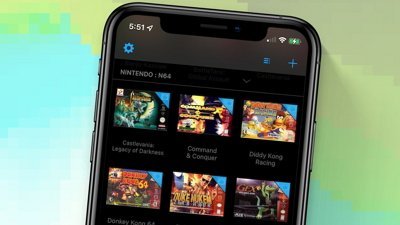Apple suspected in new deal for PowerVR graphics in multi-touch devices
Apple is believed to have extended a deal with Imagination Technologies that will see graphics cores from the chipmaker situated in future multi-touch devices for years to come.
The new agreement is said to extend upon a deal originally forged back in July of 2007. At the time, Imagination said "the SoCs to be developed under this license agreement will be produced for this new partner by Imagination’s existing semiconductor partners and/or new chip manufacturing partners."
Given that the "electronics system company" was both a "new partner" and not itself a chip manufacturer strongly suggested that the mystery company was in fact, Apple, which stands among few other companies new to mobile graphics core licensing but dependent upon third party manufacturers who are already Imagination partners.
The iPhone and most other mobile devices use a version of Imagination's PowerVR MBX graphics processor core that supports features of OpenGL ES 1.1. Many mobile chip manufactures, including Apple SoC manufacturing partner Samsung, also have a design license to modify and develop their own SoCs that include the MBX graphics core.
However, Imagination announced separately this past April that it signed a manufacturing-only license with Samsung with respect to its next-generation PowerVR SGX VXD video IP cores, which introduces OpenGL ES 2.0 support, along with a Universal Scalable Shader Engine that provides mobile devices with highly efficient, shader-based 3D graphics. The new core is not only backwards compatible with code developed for MBX, but also runs that code with better performance and efficiency.
This lead people familiar with the matter to suggest that Apple, which recently acquired fabless chipmaker PA Semi, had orchestrated a triangular deal in which it would internally develop its own next-generation mobile SoCs that incorporate Imagination's latest graphics technology and then use Samsung to manufacture the chips.
As a result of license extension announced Thursday, Imagination said it expects its IP cores to be featured "in a number of new SoCs to be used in this company’s future products" for which it will receive on-going licence fees as well as royalty revenues.
By gaining exclusive access to new generations of mobile graphics technology from Imagination's portfolio and pairing them with custom-designed SoCs, Apple can differentiate its products from other smartphones and mobile Internet devices with an edge in performance while offering full support for industry standard OpenGL ES graphics.
It should also be noted, however, that the door is open for Apple to incorporate future versions of Intel's Atom line of mobile processors, which also incorporate Imagination's PowerVR graphics cores.
For more on Apple's secret licensing deal with Imagination, see AppleInsider's two page report titled Apple's bionic ARM to muscle advanced gaming graphics into iPhones.
 Kasper Jade & Prince McLean
Kasper Jade & Prince McLean










 Malcolm Owen
Malcolm Owen
 William Gallagher and Mike Wuerthele
William Gallagher and Mike Wuerthele
 Christine McKee
Christine McKee
 William Gallagher
William Gallagher

 Marko Zivkovic
Marko Zivkovic









